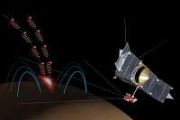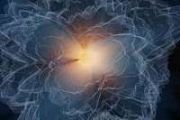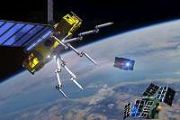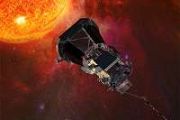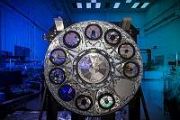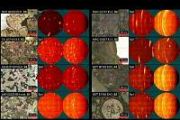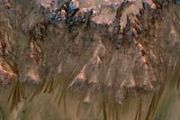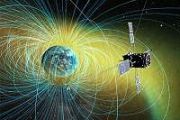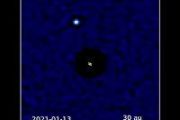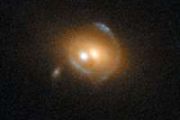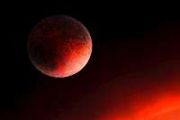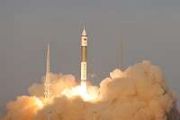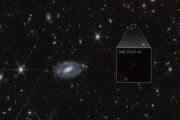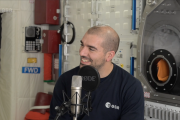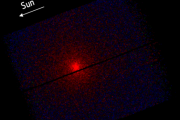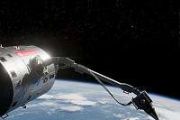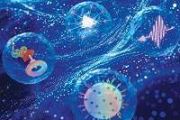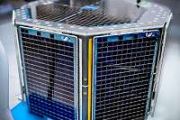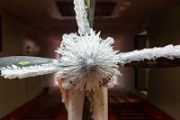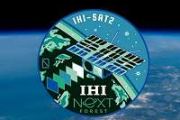
Copernical Team
European Team Validates Flow Models in Zero Gravity
 For years, various models have been developed to describe a key class of mixing effects in flows, such as those in chemical reactors. Experimental validation has lagged due to gravity's influence. A European research team, including the Helmholtz-Zentrum Dresden-Rossendorf (HZDR) and partners at the University of Szeged and Universite libre de Bruxelles (ULB), has addressed this with experiments
For years, various models have been developed to describe a key class of mixing effects in flows, such as those in chemical reactors. Experimental validation has lagged due to gravity's influence. A European research team, including the Helmholtz-Zentrum Dresden-Rossendorf (HZDR) and partners at the University of Szeged and Universite libre de Bruxelles (ULB), has addressed this with experiments ESA's OPS-SAT CubeSat Mission Concludes
 ESA's experimental OPS-SAT CubeSat mission ended on the night of May 22-23, 2024 (CEST).
Launched on December 18, 2019, OPS-SAT aimed to make spacecraft operations accessible to a wide audience, offering a fast, free, and non-bureaucratic experiment service for European and Canadian industry and academia.
The mission involved experimenters from companies, universities, and public ins
ESA's experimental OPS-SAT CubeSat mission ended on the night of May 22-23, 2024 (CEST).
Launched on December 18, 2019, OPS-SAT aimed to make spacecraft operations accessible to a wide audience, offering a fast, free, and non-bureaucratic experiment service for European and Canadian industry and academia.
The mission involved experimenters from companies, universities, and public ins Hubble trouble: Veteran space telescope forced to take it easy
 The venerable Hubble Space Telescope, which has revolutionized astronomical discovery since its launch in 1990, will ease into retirement with a scaled-back observing schedule, NASA officials said Tuesday.
One of the three gyroscopes that control the direction in which the telescope points has become unstable in recent months, leading to intermittent "safe mode" episodes - most recently on
The venerable Hubble Space Telescope, which has revolutionized astronomical discovery since its launch in 1990, will ease into retirement with a scaled-back observing schedule, NASA officials said Tuesday.
One of the three gyroscopes that control the direction in which the telescope points has become unstable in recent months, leading to intermittent "safe mode" episodes - most recently on Seeking Water Worlds: NASA's Solid State Quantum Magnetometers
 "Follow the water!" The solar system contains water in various forms, from the Sun's water vapor to Pluto's ice. Water is essential not only for life but also for its geological properties and potential uses. For instance, lunar and Martian ice could support human exploration, and comets may have brought water to Earth. The icy comets and rings of Saturn illustrate solar system evolution.
"Follow the water!" The solar system contains water in various forms, from the Sun's water vapor to Pluto's ice. Water is essential not only for life but also for its geological properties and potential uses. For instance, lunar and Martian ice could support human exploration, and comets may have brought water to Earth. The icy comets and rings of Saturn illustrate solar system evolution. NASA seeks faster, more affordable Mars sample return mission
 NASA officials want a new Mars sample return mission plan that is faster, costs less and isn't as complex than one scrapped in April.
The space agency doesn't want to wait until 2040 and spend $11 billion to return core samples being collected on Mars, which the recently scrapped plan would have required.
NASA Administrator Bill Nelson in April canceled the lengthy mission plan, saying he
NASA officials want a new Mars sample return mission plan that is faster, costs less and isn't as complex than one scrapped in April.
The space agency doesn't want to wait until 2040 and spend $11 billion to return core samples being collected on Mars, which the recently scrapped plan would have required.
NASA Administrator Bill Nelson in April canceled the lengthy mission plan, saying he Chang'e 6 Mission Completes Lunar Sample Collection
 China's Chang'e 6 mission achieved a critical milestone as its sample-loaded ascender launched from the moon's far side on Tuesday morning.
"According to the China National Space Administration, the ascender, one of the four major components of the Chang'e 6 robotic probe, started its ascent engine at 7:38 am and flew nearly 6 minutes before reaching a lunar orbit."
The mission gathe
China's Chang'e 6 mission achieved a critical milestone as its sample-loaded ascender launched from the moon's far side on Tuesday morning.
"According to the China National Space Administration, the ascender, one of the four major components of the Chang'e 6 robotic probe, started its ascent engine at 7:38 am and flew nearly 6 minutes before reaching a lunar orbit."
The mission gathe Boeing Starliner's first astronaut mission scheduled to launch Wednesday
 After several scrubbed liftoffs, Boeing's first Starliner crewed mission will try again Wednesday to launch NASA astronauts Butch Wilmore and Suni Williams on a critical, week-long test flight to the International Space Station.
NASA and Boeing confirmed Monday that the Starliner capsule, United Launch Alliance Atlas V rocket and ground support equipment are in good shape and ready for
After several scrubbed liftoffs, Boeing's first Starliner crewed mission will try again Wednesday to launch NASA astronauts Butch Wilmore and Suni Williams on a critical, week-long test flight to the International Space Station.
NASA and Boeing confirmed Monday that the Starliner capsule, United Launch Alliance Atlas V rocket and ground support equipment are in good shape and ready for ESA Invites Launch Providers for European Launcher Challenge
 ESA has launched a Request for Information (RFI) aimed at European launch service providers in preparation for the European Launcher Challenge. This initiative, unveiled in Seville, Spain, in November 2023, aims to enhance Europe's space access by promoting a variety of launch options and boosting the competitiveness of European launch services.
The European Launcher Challenge, to be funde
ESA has launched a Request for Information (RFI) aimed at European launch service providers in preparation for the European Launcher Challenge. This initiative, unveiled in Seville, Spain, in November 2023, aims to enhance Europe's space access by promoting a variety of launch options and boosting the competitiveness of European launch services.
The European Launcher Challenge, to be funde SpaceX launches 20 Starlink satellites with Direct to Cell capabilities
 SpaceX launched its Falcon 9 rocket into orbit Tuesday night with 20 Starlink satellites, including some with Direct to Cell capabilities that will improve access to text and voice data here on Earth.
"Ignition and liftoff. Go Falcon. Go Starlink," mission control said as the rocket blasted off at 10:16 p.m. EDT from Space Launch Complex 40 at Florida's Cape Canaveral Space Force Statio
SpaceX launched its Falcon 9 rocket into orbit Tuesday night with 20 Starlink satellites, including some with Direct to Cell capabilities that will improve access to text and voice data here on Earth.
"Ignition and liftoff. Go Falcon. Go Starlink," mission control said as the rocket blasted off at 10:16 p.m. EDT from Space Launch Complex 40 at Florida's Cape Canaveral Space Force Statio Two Terran Orbital Space Vehicles Added to NASA's $6 Billion Rapid IV Contract
 Terran Orbital has expanded its offerings under NASA's multi-participant Rapid Spacecraft Acquisition IV (Rapid IV) Indefinite-Delivery/Indefinite-Quantity (IDIQ) contract. NASA has added two additional space vehicle platforms, positioning Terran Orbital as a key partner for the space agency with a broader range of solutions for various missions.
Terran Orbital has been part of this contra
Terran Orbital has expanded its offerings under NASA's multi-participant Rapid Spacecraft Acquisition IV (Rapid IV) Indefinite-Delivery/Indefinite-Quantity (IDIQ) contract. NASA has added two additional space vehicle platforms, positioning Terran Orbital as a key partner for the space agency with a broader range of solutions for various missions.
Terran Orbital has been part of this contra 


